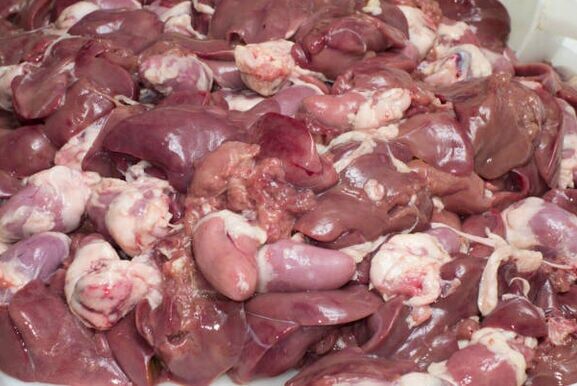COLUMN: A growing market for offal in the US
Offal is really quite fantastic for fashionistas, foodies, consumers, and cattle producers. About 56% of the weight of a steer slaughtered in the U.S. is comprised of cuts with which retail consumers are familiar. Roasts, steaks, and ground are the most recognizable cuts in the grocery meat case that most consumers know how to cook. Offal, which comprises the other 44%, includes organ meats and hides. These saleable organ meat cuts offer a significant value to consumers in the form of nutrients and provide a budget friendly option. Offal offers increased dollars per carcass to producers, especially those able to leverage international and ethnic markets.
Jordan Kraft Lambert, director of Ag Innovation at the Colorado State University Spur campus in Denver, spends her time on the campus, which she calls a cathedral to all things food and agriculture, leveraging solutions for problems faced by cattle producers. Case in point, the loss of the value of 44% of a carcass is, indeed, a problem.
For cattle harvested by large packers, like Colorado’s Cargill and JBS, the value is easier to capture as large loads of offal can be processed into consumer ready packaging and sent to the markets with strong demand. It’s the scale of efficiency.
Several years ago, I went to a Sam’s Club store with a group of Japanese cattle buyers. They were shocked at the size of a brisket, a cut meant not to actually feed a small village. But they were also surprised they didn’t see the cuts with which they are familiar in Japan. Notably, Costco has a giant presence in Japan and is the go to for consumers demanding U.S. beef. For a U.S. cattle producer, a tongue is difficult to market stateside, but in Japan, where it is a delicacy, it can add $40 per carcass. That’s significant. One man’s tongue is another man’s treasure.
The health benefits of offal also eclipse the experiences of 1980s babies eating grandma’s recipe for liver and onions smothered in ketchup gravy. (Sorry, Grandma. It’s not something I wish to duplicate. Shudder.)
Offal are the edible internal organ meats of animals that include tongue, heart, liver, kidney, lung and stomach.
These meats are the most nutrient-dense part of the animal, and for this reason, according to Lambert, are often what animals in the wild will prioritize eating when they’ve had a successful hunt.
Offal is often a star in ethnic dishes. There’s certainly no self-respecting taco truck in my neck of the woods that doesn’t offer lengua tacos and a Sunday menudo. My grandparents — the ones of liver and ketchup fame — lived in London when I was a kid and spoke of enjoying kidney pies and haggis abroad. Today’s foodies are finding offal in inspired dishes prepared by chefs that just aren’t your grandma’s offal. Of course, offal also include Rocky Mountain Oysters, which are calf testicles that have been butterflied, breaded, and deep fried.
If you are one or know one of the aforementioned 1980s babies, they very likely are caught up in the craze over tallow skin care. My local meat processor, Stagecoach Meats, has value-added products including all sorts of tallow lotions and body butters and lip balms as well as pet treats. You can keep your leggings and fancy coffees, pass the peppermint oil-infused tallow hand cream.
Hides, Lambert said, are a byproduct she said even devoted vegetarians can enthusiastically support. Leather, which is no longer just a luxury item, is breathable, durable, and fashionable. Compared to vegan leather (read: plastic), leather will eventually break down if thrown into a landfill. That is, of course, if it’s not kept and passed down as an heirloom.
As the demand for meat increases, so will the supply of hides and the more hides used in sustainable, high-quality items, the fewer lower quality, petroleum-based items will have to be purchased. Anyone concerned with the environment can certainly get behind biodegradable leather that won’t break down into microplastics.
Transporting offal shorter distances to markets with higher demand and also bringing the products and value of the entire steer to urban and suburban consumers is anything but offal.
To celebrate offal, Lambert is hosting an Offal Party with chef-prepared dishes, a leather fashion show with items designed by CSU students, and pitches from three startup businesses that are trying to provide cattle producers with an additional market for offal in the U.S.
More information is available at The Offal Party 2025; Featuring the Genuine Leather Fashion Show Tickets, Sat, Jan 25, 2025 at 5:30 p.m. | Eventbrite.
Rachel Gabel writes about agriculture and rural issues. She is assistant editor of The Fence Post Magazine, the region’s preeminent agriculture publication.





